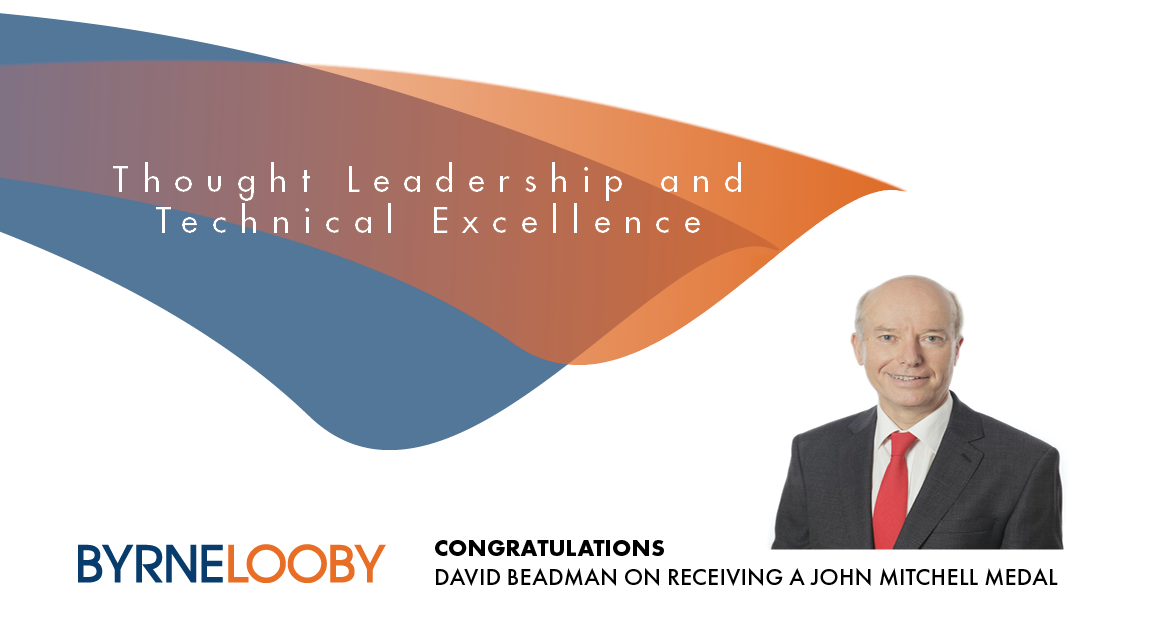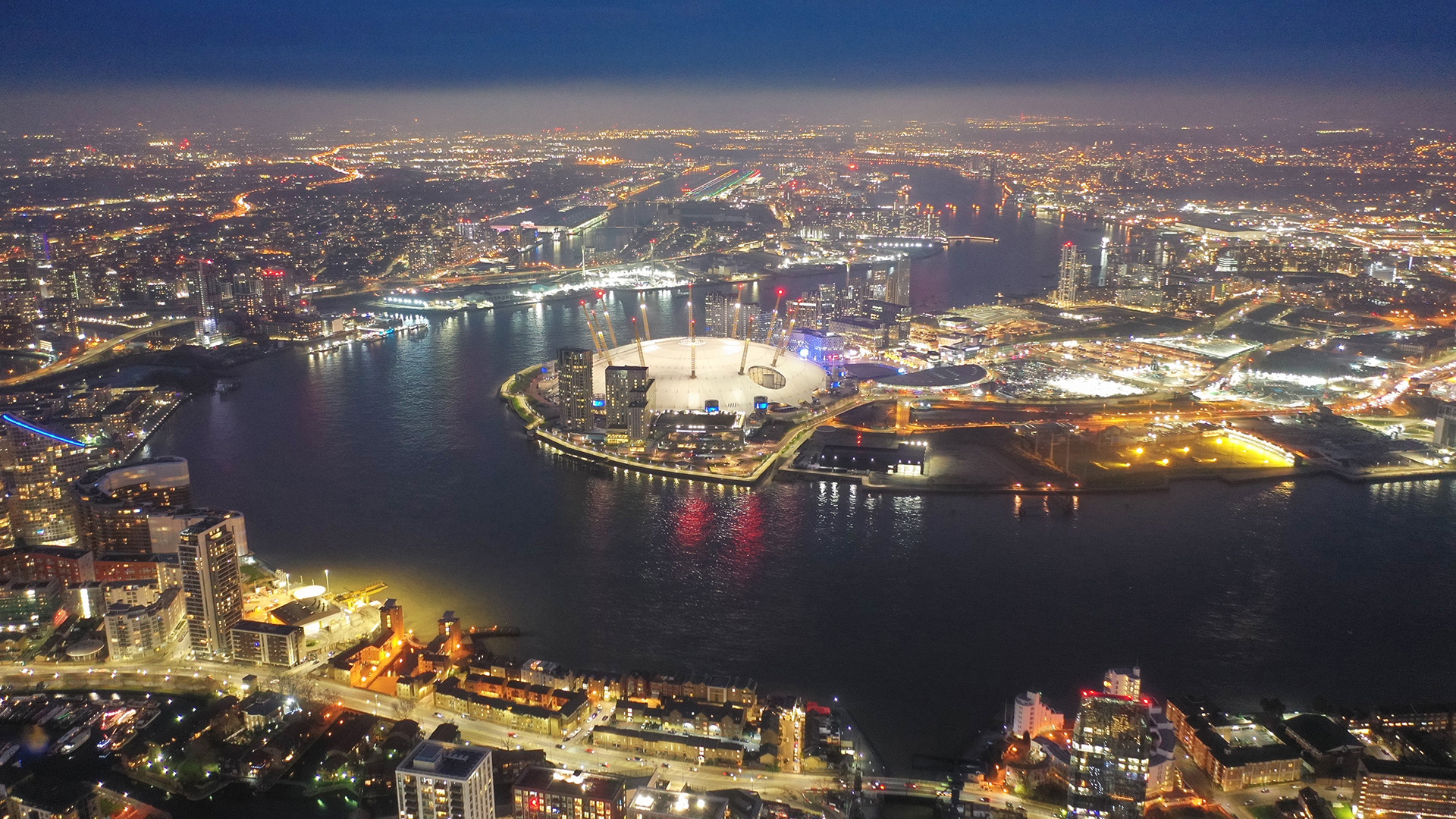David Beadman on receiving a John Mitchell medal

ByrneLooby Consultant David Beadman was honoured to receive a John Mitchel Medal
Kindly reproduced with Ground Engineering Magazine’s permission
“A HIGHLIGHT OF MY MORE RECENT CAREER HAS BEEN THE DEVELOPMENT OF BYRNELOOBY IN ENGLAND AND RUNNING THE GUILDFORD AND MANCHESTER OFFICES. THIS HAS PROVIDED A HUGELY SATISFYING CONCLUSION TO MY PROFESSIONAL CAREER, EMPLOYING AND TRAINING MANY VERY BRIGHT AND ENTHUSIASTIC GEOTECHNICAL ENGINEERS AND FINDING INTERESTING AND PROFITABLE WORK FOR THE TWO OFFICES.”
Last Tuesday, 26th January 2020, ByrneLooby Consultant David Beadman was honoured to receive a John Mitchel Medal and delivered his John Mitchell Lecture online to a captivated audience of close to 300 people. ByrneLooby wishes to congratulate him on receiving his medal and on the fascinating lecture he delivered. For those that missed the webinar, his key points are summarised below. The John Mitchel Lecture is jointly run by the British Geotechnical Association and the Institution of Civil Engineers.
David opened his lecture by saying that he wanted to concentrate on “a few things that didn’t go quite right” rather than listing his achievements. “Because that’s when we learn things,” he noted. His theme focused on “Buildability”, carrying on the subject from last year’s John Mitchell lecture recipient Stuart Marchand who talked about the importance of “Constructability.”
David said: “Buildability is important in so many ways in geotechnical design, both in terms of making sure that the plant can construct it and in making sure that the design works.”
Key Points – John Mitchell Geotechnical Lecture
David presented two early-career project examples including the Jubilee Line extension and the Copenhagen Metro. While extending the Jubilee line extension, he spoke about how unexpected high prop loads on the significant excavation at North Greenwich station gave him sleepless nights. He commented "Why do I think we got these higher prop loads? Possible reasons: the London clay could have been lower locally, so we would have a lot more groundwater on the wall. Equally, we could have had some anchors in, with perhaps a lower stiffness, so the anchors moved more," he explained. "Nevertheless, we had these additional loads, and the point to make here is, what I learned very early on: loads from the ground do vary." He continued: "Ideally, you should be measuring 60-70% of your design load, not 150% and perhaps more. My design needed more “what-if” scenario testing. What would happen if the clay layer was locally lower and you got higher groundwater? Or what would happen if you had reduced anchor flexibility?"
After the Jubilee Line extension, Beadman travelled to Copenhagen with Bachy Soletanche. "We tendered for the first underground metro system in Copenhagen. This was the first deep basement that had been cast and built in the city, so we had no case history to rely on. Copenhagen is set on the coast, and there are high groundwater levels. Glacial clays and sands overlie the limestone with flints that occur at 10-12m below ground level,” he said.
Christianshavn was the first station on the scheme and it presented the team with an interesting opportunity to use temporary props on two levels. However, Beadman said they encountered something strange on the load of the bottom props.
"We had a design load for the bottom props of 10,000kN per prop, but we only measured a maximum of 2,000kN, one-fifth of our design load, with an average of about 1,500kN,” he explained. “So, how can this be? We knew we had water on the outside of these boxes. I think this can only be due to the absence of any significant soil or water loads being applied to the wall within the limestone. And my conclusion was that the combination of the overburden and the mass of the limestone was acting as a gravity retaining wall. So, it was actually able to support the water pressure without really much assistance from our embedded wall."
When reflecting on what he would do if he were designing these two projects all over again, Beadman said: “On the Jubilee Line extension, I would certainly do more sensitivity analyses and take account of the possible variations of the top of the London Clay and design for a higher prop load. "In Copenhagen, I don't think I would have done anything different. It would be a very brave man not to take account of those water pressures in your propping design. We do need our designs to be robust. We must avoid any failures."
On pile design and performance
• Factor of safety in design is very important.
• Pile test results can be variable, but pile testing remains important.
• London Clay is variable.
• Hydrocarbons may affect pile resistance.
• Base cleanliness clearly affects pile settlement.
• Concrete pressure may affect pile load resistance.
• Working piles should be constructed in the same way as preliminary test piles.
On Eurocodes
"In spite of Brexit, the Eurocodes still represent the best practice guidance we've got for design,” Beadman said.
“I welcomed Eurocode 7 when it was first introduced, because it set down clearly the level of safety we should apply to geotechnical design, clearing up a lot of earlier uncertainty.
“However, I do think that the Eurocodes are too complicated. We sort out our level of safety by applying partial factors to various bits of the design; we apply partial factors to the loads and soil strengths. And this complexity continues to cause confusion.
“The result is unnecessary design costs and additional design comments, with no benefit. I think we need to simplify the Eurocodes. And we can do this without waiting for all of Europe to agree a revision. We can do it by amending our national annex.
David also spoke about the challenges and opportunities that the geotechnical sector should focus on for the future. He said
“With the projected lack of geotechnical engineers and particularly the lack of experienced engineers, the sector needs to find an efficient way of using the available resources. Avoiding inefficient procurement practices that result in a project being designed many times before it is built is one way to address this problem. Transferring design responsibility down the contractual chain is often not an efficient way of working. Many detailed geotechnical designs are done, or procured, by the specialist subcontractor, who is employed late in the project when the permanent works have been defined by the main consultant many months before. Finding a procurement process to enable this expertise to be applied earlier in the design would avoid some of the costly late design changes and reduce the number of times an element is designed.”
Discover more about our geotechnical expertise here.




.png)

